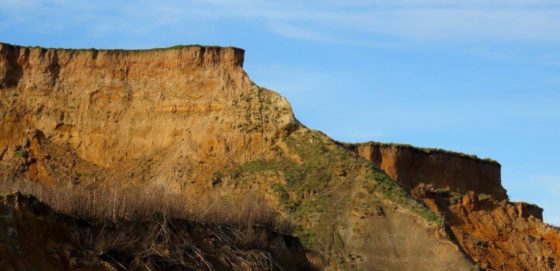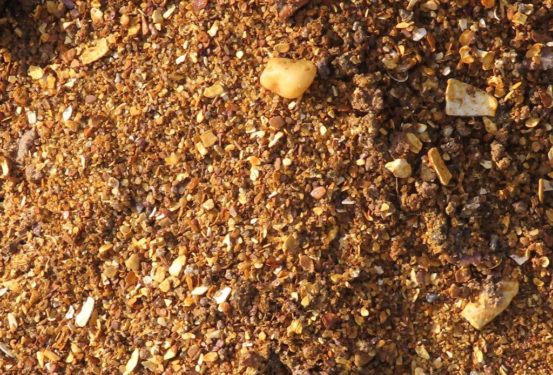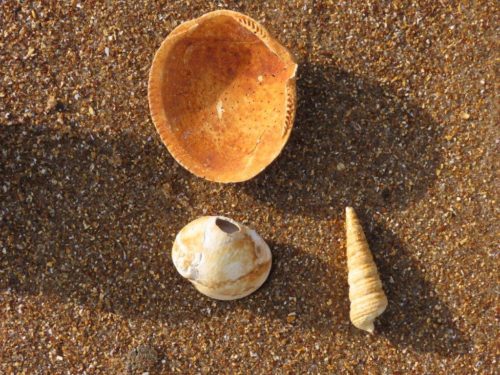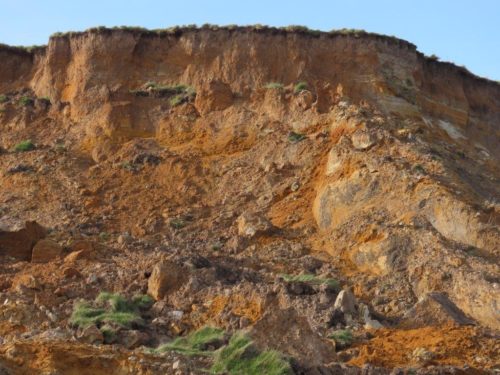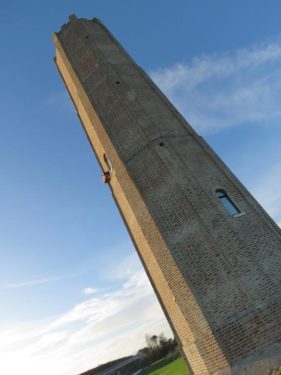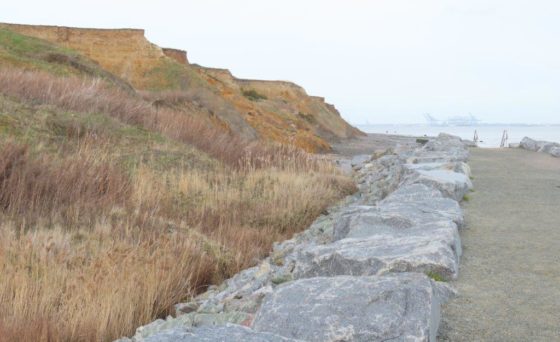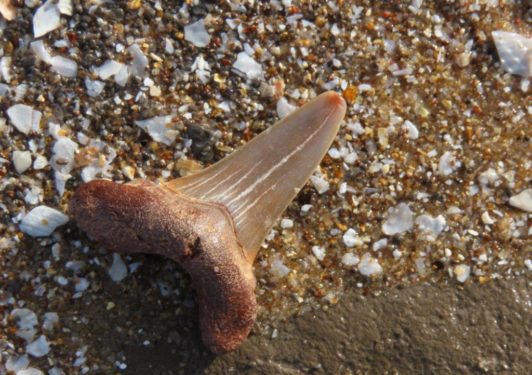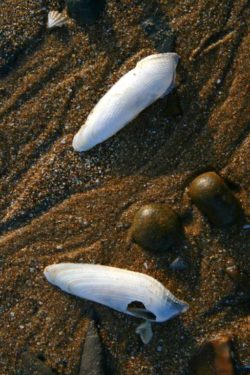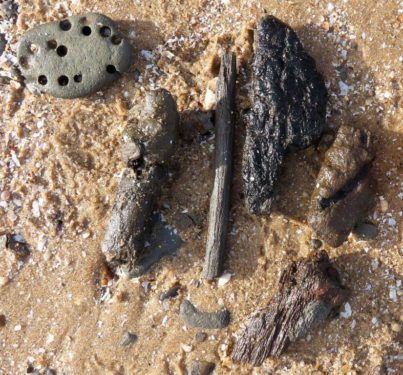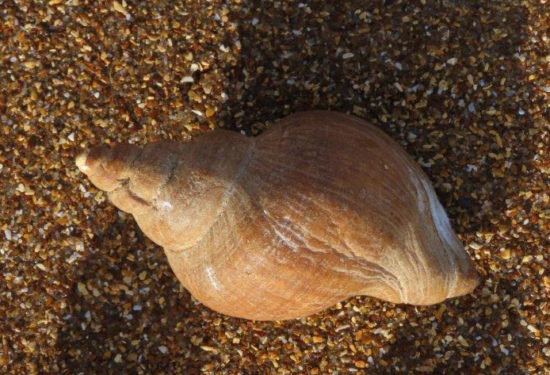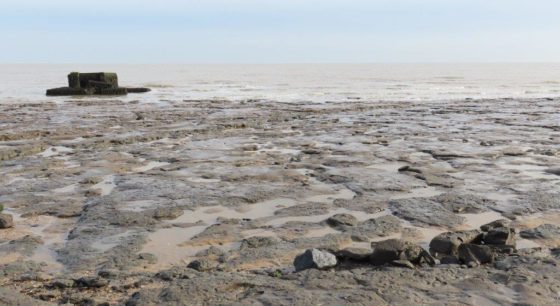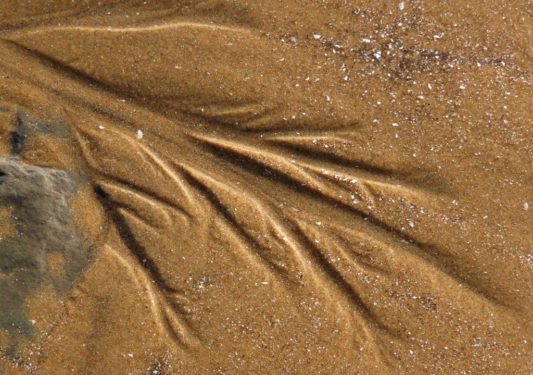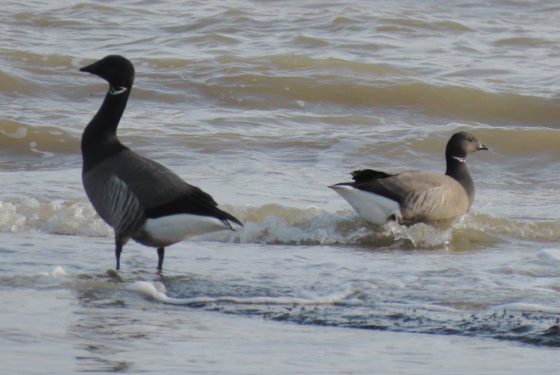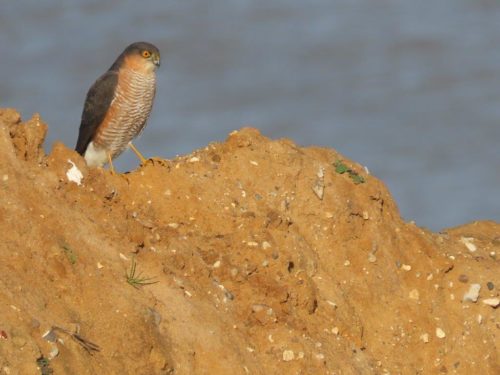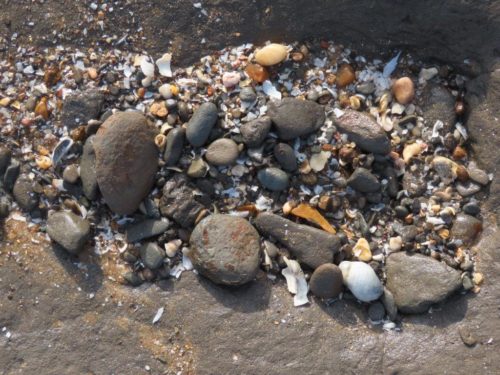What could be better – a walk on the beach on a sunny afternoon, time to scrabble about and get dirty hands in the search for fossils and other beach treasures, followed by tea, cake and chat in the warm? Our intrepid Bug-and-Botanists all had a whale of a time on Saturday at The Naze, and despite there being a distinct lack of botany (except of course Gorse) or bugs to admire, there was plenty of ‘nature’ to enjoy!
Standing on the beach looking at the cliffs, you really are looking back many millions of years in time. The whole area, a Site of Special Scientific Interest, is one of the finest geological sites in Britain, comprising layers of London Clay, topped by Red Crag.
The stunning redness of the Crag is due to oxidisation of the sand and fossil layer laid down over 3 million years ago when Walton was, as now, at the edge of the sea, just prior it being engulfed in the turmoil of the last Ice Age. Fossils of many kinds and shell debris can be readily be found on the beach, most stained an attractive red colour, distinguishing them from otherwise-identical modern shells.
A combination of the seeping of rainwater downwards, lubricating the clay surface, and storm wave pressures makes the whole area prone to landslips and substantial coastal erosion, which although a delight for geologists and fossil-hunters, nevertheless is extremely worrying for those with buildings atop the cliffs! One example of course is the famous Naze Tower, a 300 year old landmark, built by Trinity House for navigational purposes and which today is a popular art-gallery and tea room. Some years ago a local dispute raged as to what to do – completely surround the whole Naze with a sea defence? (extremely expensive and would prevent geological discovery and the ‘production’ of sand which feeds our local seaside resorts), or let the whole area eventually fall into the sea?. A compromise was sought and about ten years ago an additional 170 metres of defence was built.
Now known as the Crag Walk, this allows a safe walkway, and provides a chance to study the cliffs at close quarters, whilst learning about the geology and wildlife from interpretation boards. It also protects the area immediately below the tower.
And so to our beachcombing….many delights awaited the patient explorer, but sadly no 50 million year old shark’s teeth, from inhabitants of the subtropical London Clay lagoon which then covered most of what is now Essex, were forthcoming this time. Our photo shows one that ‘we found earlier’ on a previous visit….
‘Boring piddocks’ Chris was heard to exclaim at one point….to whom or what was he referring? Turns out Piddocks, also known as Angels’ wings, are attractive shells which bore vertically in the soft London Clay, making perfectly round holes as they do so. These examples (above left) are modern, as is their holey now-deserted home in the right hand image. Other delights in this photo include ancient pyritised wood (turned to ironstone), and fossilised poo known as ‘coprolite’. Fifty million years old!
The ubiquitous left-hand coiling whelks Neptunia contraria are interesting as most gastropods coil in a dextral way; these left-handers from the Red Crag seas can be dated at over two million year old. It’s hard to get your head round numbers like this!
Although quite slippery on the London Clay platform, areas of sand became more accessible as the tide receded and we were particularly struck by the beautiful dendritic drainage tree-shapes in the sand. So much to see, but the time came to leave the beach and we finished our session with a cliff-top walk, admiring features on the skyline, and taking the opportunity for some wildlife-spotting:- a Common Seal bobbing along, Brent Geese feeding and a perfect chance to see a beautiful male Sparrowhawk at rest on the Crag.
We look forward to kicking off our season of Botany and Bug Walks proper in April, and hope that some of you will be able to join us.
